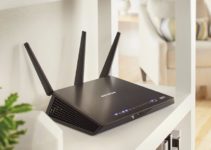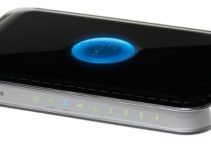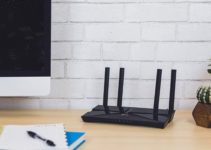IP Address stands for Internet Protocol Address. Networking primarily consists of 7 layers according to the OSI model. The layers are:
- Application Layer
- Presentation Layer
- Session Layer
- Transport Layer
- Network Layer
- Data Link Layer
- Physical Layer
IP address falls under the category of the Network Layer. It is primarily used for communication purposes i.e., you need it when you connect to the internet and even if you connect your device to any other device. It can be subdivided into 2 more categories,
- IPv4
- IPv6
IPv4 consists of 4 classes namely Class A, Class B, Class C, Class D. The 10.1.1.1 is a part of the 10.0.0.0/8 network, Class A private IP Address block. Though it is not rout-able on the internet, it is commonly used to set up a private local area network. 10.1.1.1 is also used as a factory default IP Address for routers, access points, or other networks.

How to Access http://10.1.1.1 Gateway?
In this section, we will throw some light on the topic of accessing the http://10.1.1.1 Gateway. Before we begin we must know that searching for the gateway will redirect the user to the router’s default gateway.
For instance, if we search “cmd” and then select the Command Prompt option, we will be asked for our IP configuration. Typing the IP configuration and then pressing the Enter button will direct us to our default gateway which will appear next to its option.
Similarly, In this section, we will throw some light on the concept of accessing finding access to the http://10.1.1.1 Gateway we first need to open a suitable web browser and type http://10.1.1.1 in the address bar.
We will be introduced to a page that has the portal address and eventually will be directed to the router’s settings. Once the correct username and password are provided we can have access to http://10.1.1.1.
Read Also:
How to Get into 10.1.1.1 Admin Login Panel?
To get into the Admin Login Panel we need to follow the below-described steps:
The user should make sure that the computer is connected to the router, if not using a wireless network. And in case of using a wireless connection make sure the computer on which the user is working is connected to a stable Wi-Fi connection.
However, it is always advised to use a wired connection especially while making changes. For the risk of sudden log out after the changes are saved, it is less in case of the wired connection.
Next, open the desired web browser and type the router’s IP address in the address bar. To get the router’s IP address, one can check the packaging, it must be there. In case of failure, the manual should be consulted and the IP addressed as the Default Gateway is one we need.
Lastly, access the Admin Panel and provide the default username and password. The default values for admin are given below:
root|user|admin
In the worst-case scenario if the above steps fail then, just type the router’s name in the web browser to locate the default credentials and the user will be located on the configuration page. Changes to the router settings and even the network if needed can be done there.
How do you Find Your Router’s IP Address?
The method of finding the router’s IP address can vary with the device the user is working on. We will have a brief look into the possible systems:
Step 1: Let’s begin with Windows:
For this, we need to first open the ‘Command Prompt’ and move to the start menu of Windows. In the search bar, we need to type ‘cmd’ and a command prompt app will be open. There will be a black window appearing and asking for the IP configuration. Apart from that, the window will also contain certain other directions or information. Following the guidelines will direct us to the default gateway access page.
Step 2: Moving on with the Linux Systems:
For this system we need to follow the order of the following steps wise:
Starting with the ‘Applications’ we need to move for the ‘System’s Tools’ and lastly move to the ‘Terminal’ option. After reaching the Terminal we will be asked to provide the IP configuration and then we will find the IP address of the router listed.
Step 3: Android Systems demand a different approach. To access the IP address of the router, we need a third-party app known as the Wi-Fi Analyzer. After the installation of the app, we need the network from the AP list, which can be obtained from the View option. Once we know the connection name, we can find the router’s IP address.
Step 4: Lastly, let us find out about the Chrome system.
In this case, first, we need to locate the network’s name from the taskbar. Once we know the network name from the listed wireless networks, we can find the IP address of the router.
How to troubleshoot router issues related to the 10.1.1.1 IP address?
The following are the possible case scenarios for the troubleshooting of router issues using the 10.1.1.1 IP address:
The first possibility can be that you forget the login password. If this happens then we need to reset the router login again. For this, we need to press and hold a small black button, present at the backside of the router for about 10 seconds. This will make sure that our router is reset to the factory settings.
The next possibility is that there might be some issues with the loading of pages and at the same time some issues with the speed. Such cases arise when the router we are using is mistakenly using the IP address of some other network. To find a solution to such a problem we need to find the right address from the router list.
Lastly, the user might face a problem where the router login page is not loading. If such a scene arises then we need to make sure that our system is connected to a stable Wi-Fi connection. One more possibility is that our default router address is the wrong one. In this case, change the default setting.
Read Also:
Conclusion
This article provides all the details you would need to know about the http://10.1.1.1 Gateway. In today’s era, the problems with network connectivity can get worse with every passing day. And at a time when we can reply only on the online hours of working it is necessary to handle the problems.
The above article aspects every sort of problem and information which the user might face during the work. I hope this helps the user with the solutions and queries.


